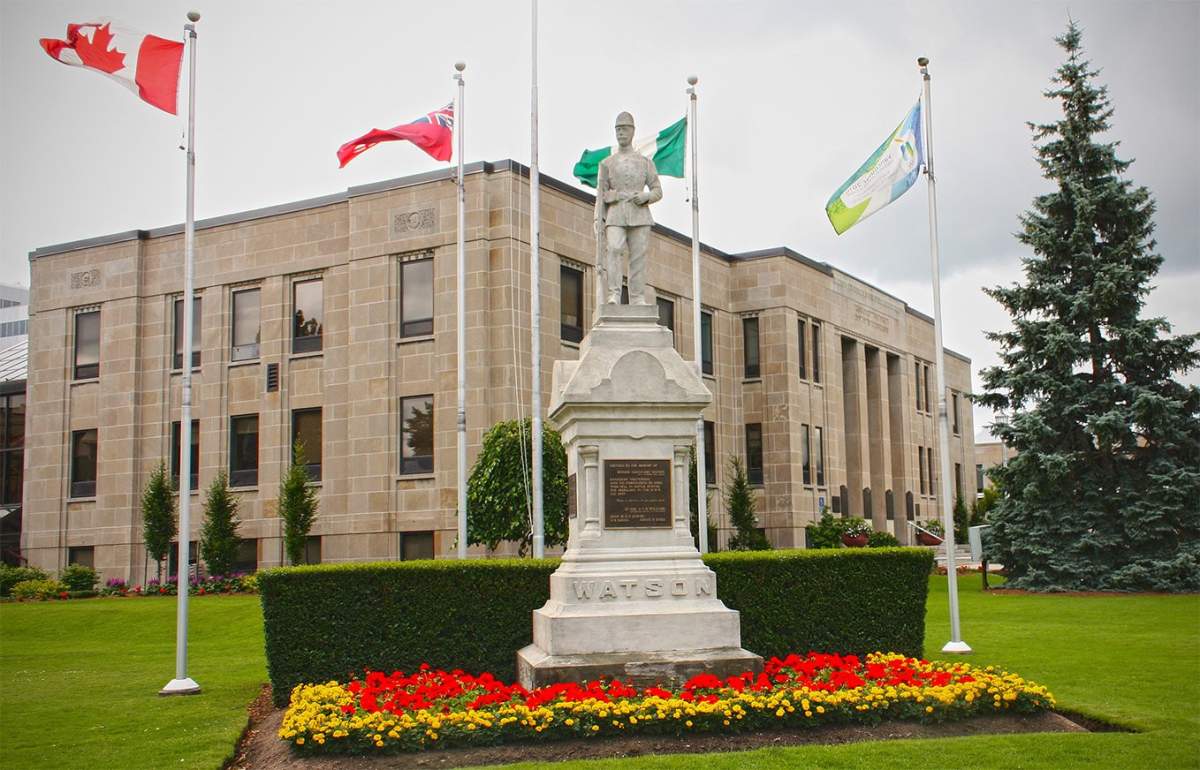A 15-foot statue that has made its home on the front lawn of St. Catharines, Ont., city hall for more than a century will soon be gone after councillors voted in favour of taking it down.

Pte. Alexander Watson’s statue is set to be displaced following a 12 to one vote supporting a removal motion from Mayor Mat Siscoe, who characterized the figure as something “that causes pain” to members of the community.
The statue, considered by many as a symbol of the federal government’s crushing of Indigenous Peoples in battle, has been in question for just over a decade and was the target of a petition in the summer of 2020 seeking its withdrawal.
“The battle this statue stands in memorial of represents a government subjugating a race of people who were standing up for their rights,” Siscoe told councillors prior to the vote Monday.
“The North-West Resistance epitomizes the anger of Indigenous Peoples over stolen lands and broken treaties and erased the treaties.”

Get breaking National news
The statue, erected in 1886, depicts a soldier who grew up in St. Catharines and died fighting with government forces during the North-West Rebellion in 1885 at the Battle of Batoche.
Niagara Regional Native Centre (NRNC) president director Sean Vanderklis said the Watson statue represented a chapter of history that continues to be “both painful and divisive” but presents an opportunity for unity and healing through its decommissioning.
“The removal of the statue is not an erasure of history,” Vanderlklis said.
“It’s a step towards reconciling with history. It’s a way to acknowledge the suffering and injustices faced by Indigenous Peoples.”
NRNC co-executive director Jessica Riel-Johns pleaded with councillors to “move forward to reconciliation” and remove the monument, insisting it doesn’t make her feel like a member of the community.
“It’s a trigger for me because I see it, I know the history,” Riel-Johns said.
“I know what role my ancestry has to play in my history…. It is a trigger for me.”
Meanwhile, delegate Dan McKnight, who once did a thesis on the city’s historical geography, said the statue does have “historical significance,” having a place on the Veterans Affairs website.
He also insisted it was the first memorial to a Canadian soldier ever erected, according to his research.
“It’s not just significant locally or provincially, but nationally significant,” McKnight said.
“I really want to highlight that before you make a decision tonight that may result in the disposal of this significant memorial.”
Ward 5 Coun. Dawn Dodge said despite questions around whether the piece represented an actual person, she submitted it does represent other people who went to war and died.
“So I’m just wondering if there’s a way that both sides could come together somehow and make something together at that site that would be amenable to both sides where they’re both represented,” she suggested.
The city’s cultural services estimates the cost of removal and relocation will be around $60,000 and financed through the city’s Civic Project Fund.
City staff will now explore what mechanisms can be used to remove the statue after initial examinations assume it would break apart if moved in a conventional fashion.
Supervisor of cultural services Carly Anderson said having been “plastersized” with stucco in the early ’70s to keep it from falling apart, the fixture is not likely to be easily reassembled.
“We would work closely with a monument builder, as well as a conservator, to determine how best to deconstruct the monument for transportation,” Anderson said.
“Then we would work with an art mover or rigger to actually lift the pieces onto a flatbed truck and transport them to their new location and then attempt to reassemble the statue.”










Comments